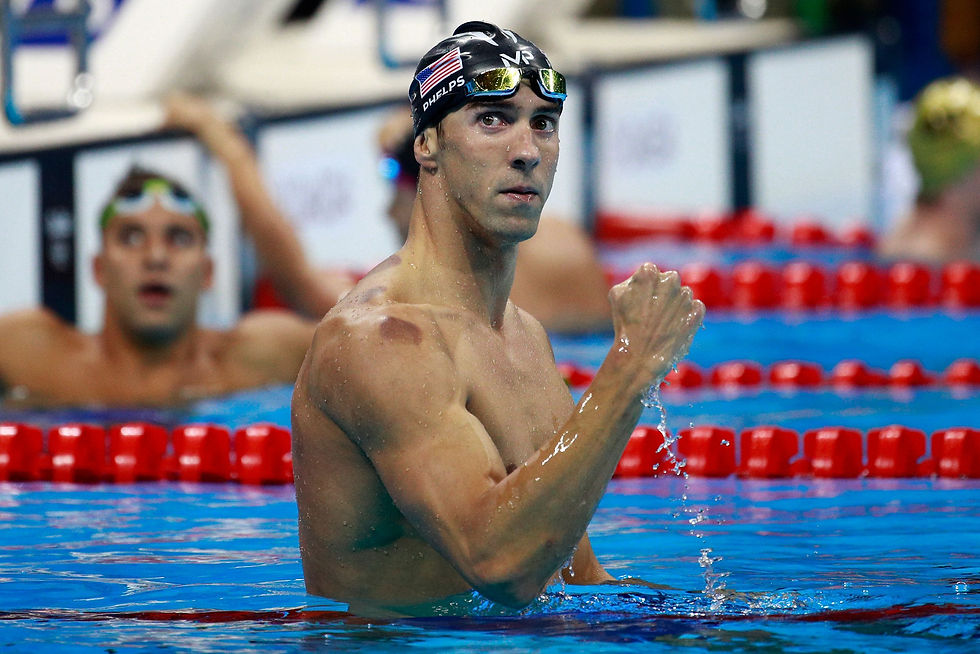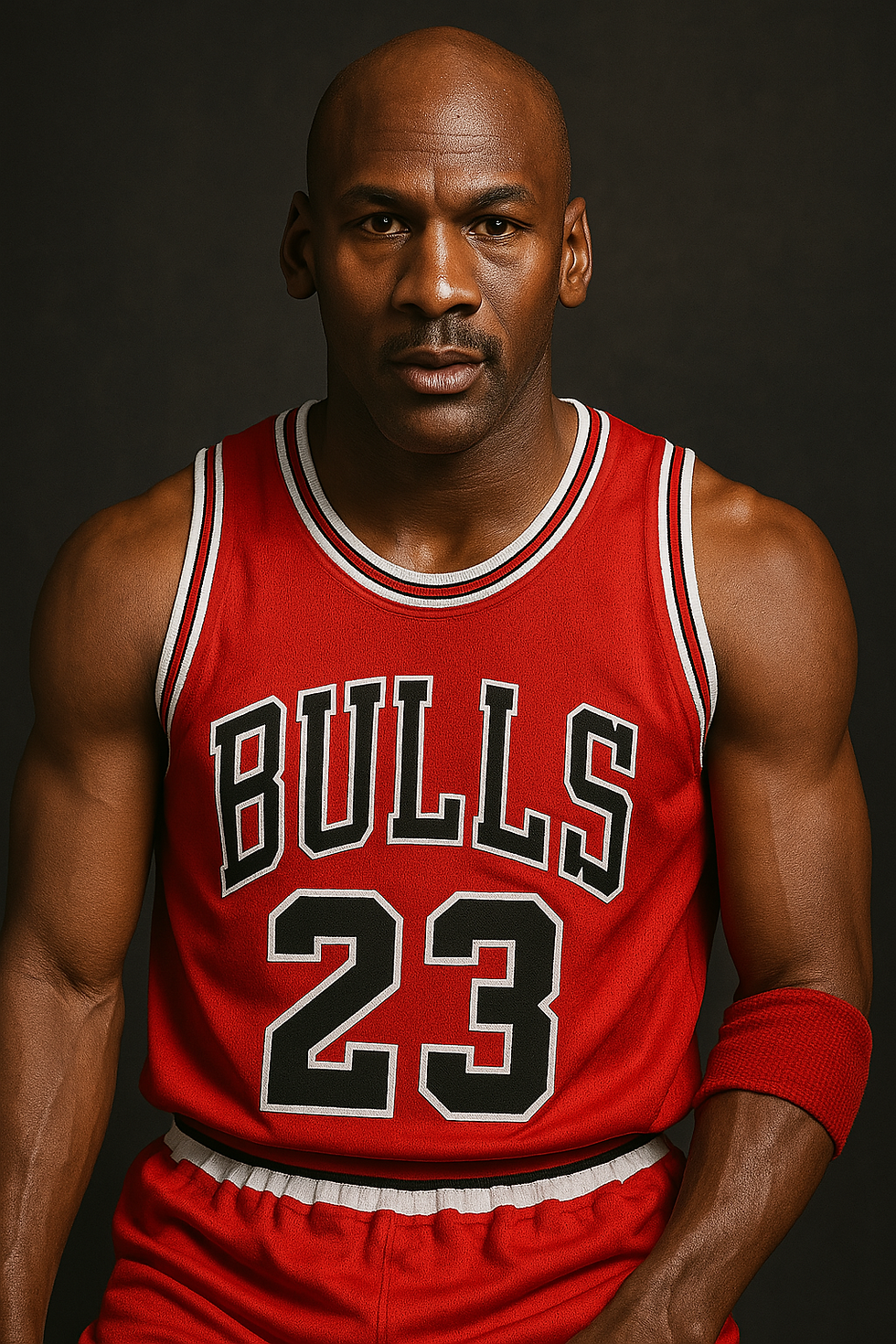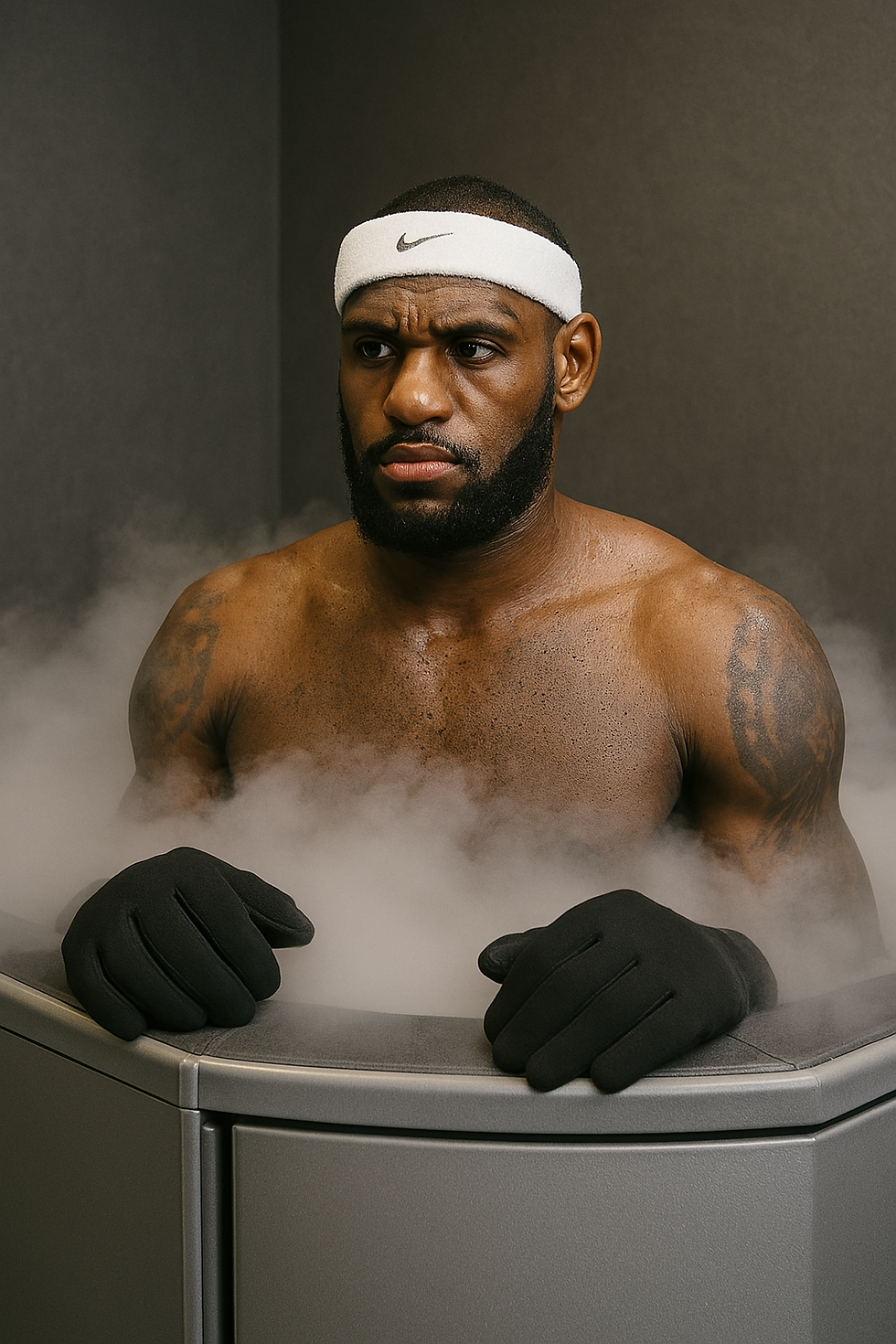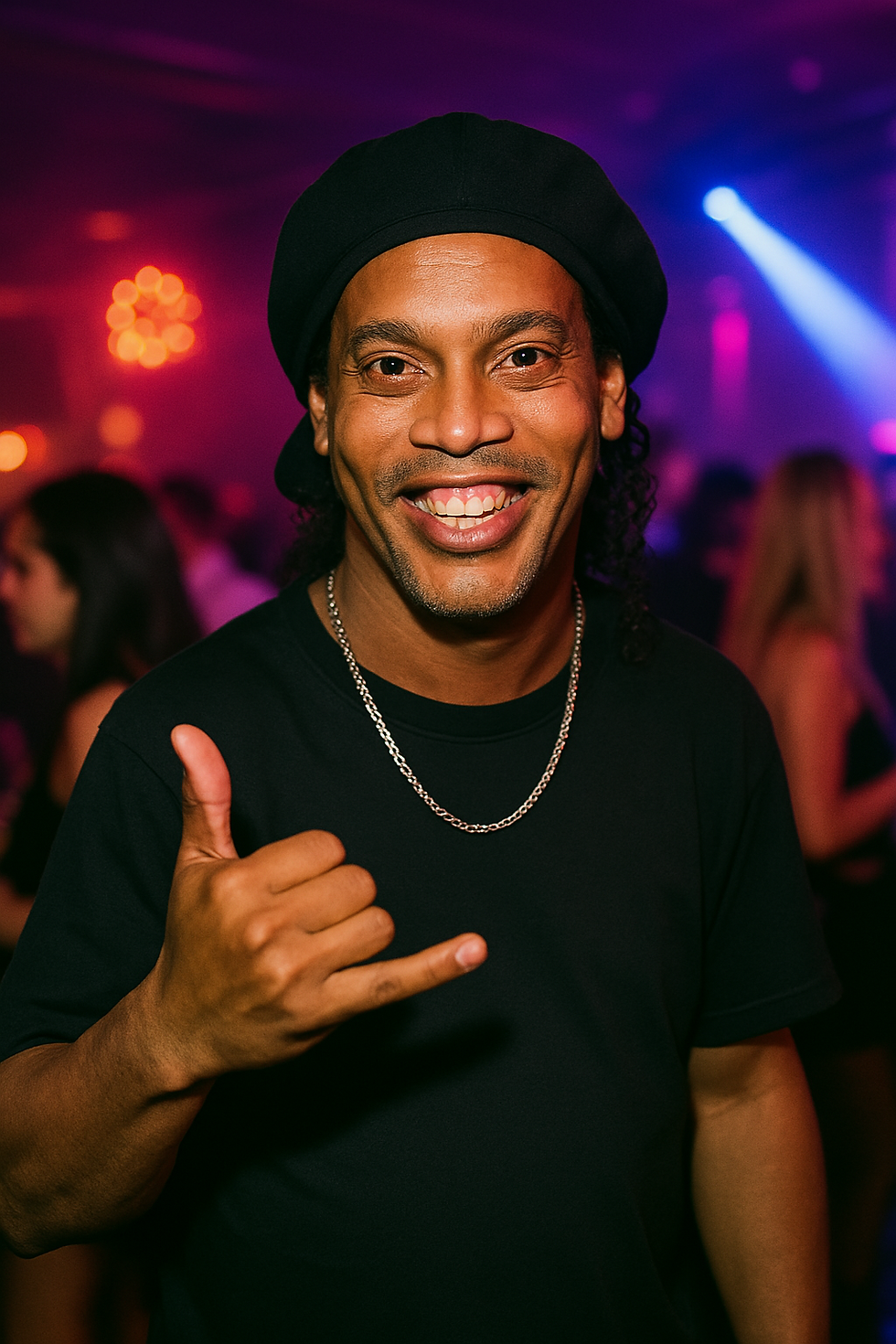The Blueprint of a Superstar Athlete
- FitnessFirstAcademy

- Mar 31
- 5 min read

By Fitness First Academy
At Fitness First Academy, we’re obsessed with performance—not just aesthetics. And when it comes to understanding what makes a superstar athlete, it’s clear that greatness isn’t just built in the gym. It’s built over years—often starting at an age when most kids are still figuring out how to tie their shoes.
So what really creates a superstar athlete? Let’s break it down.
1. Early Exposure: The Foundation of Greatness
Most elite athletes didn’t just stumble into greatness—they were immersed in their sport from a young age.
• Floyd Mayweather was hitting the speed bag before he could spell “jab.”
• Steph Curry was shooting in NBA gyms as a toddler, learning from his father Dell Curry.
• Serena and Venus Williams trained under their father’s guidance on public tennis courts in Compton from the age of four.
• Lionel Messi joined his first soccer club at age 5, and by 13, he was recruited into FC Barcelona’s famed youth academy.
• Michael Phelps started swimming at age 7 and was training seriously by 11—with an Olympic mindset before he hit puberty.
Why does this matter?
Early exposure primes the brain and body during critical windows of development. Neurological pathways are established early—allowing for elite-level motor control, coordination, and reaction time to become second nature. Even more importantly, starting at a young age can promote the development of fast-twitch muscle fibers, the type responsible for explosiveness, sprinting, agility, and high-intensity power output.
When these qualities are trained consistently from childhood, the athlete doesn’t just “learn the sport”—they literally build a body that’s optimized for it.
2. Genetics: The Blueprint No One Talks About

Let’s be honest—superstars are not built only through hard work. Genetics play a role.
Each sport favors specific body types, and even within a sport, different positions demand unique builds:
Soccer:
• Wingers & Strikers: Lean, explosive, agile (think Kylian Mbappé)
• Defenders: Strong, solid core, powerful legs (Virgil van Dijk)
• Midfielders: Engine-like stamina, balance, and endurance (Luka Modrić)
Basketball:
• Guards: Quick, agile, elite ball-handling (Steph Curry: 6’2” but unmatched skill)
• Forwards/Centers: Height, wingspan, strength (LeBron James, Giannis Antetokounmpo)
American Football:
• Running Backs: Compact, explosive (Saquon Barkley)
• Quarterbacks: Precision, decision-making, strong core (Patrick Mahomes)
• Linebackers: Bulk and agility combined (Ray Lewis)
Swimming:
• Long torso, large feet and hands, wide wingspan (Michael Phelps is the prototype)
The truth? You can train your way to elite—but some doors open easier if you’re born with the right key.
3. Mentality: The Mind of a Killer

What separates a good athlete from a legend?
Mindset.
Superstars aren’t casual. They’re obsessive. Focused. Relentless.
• Kobe Bryant trained at 4 a.m. for years—not for show, but because he had to.
• Cristiano Ronaldo is often the last to leave the training pitch—even in his late 30s.
• Mayweather said, “Hard work, dedication”—and lived it to the extreme.
Mental toughness. Unshakable belief. Discipline when no one’s watching. This is the X-factor.
4. Mentors & Coaching: The Unsung Catalyst

Behind every superstar athlete is often a mentor, coach, or system that shaped them during their early years.
• Floyd Mayweather Jr. was trained by his father, Floyd Mayweather Sr., a former professional boxer who introduced him to the sport as a toddler.
• Patrick Mahomes—the NFL’s golden boy—began working with strength coach Bobby Stroupe in the fourth grade, developing the mobility and power that now define his game.
• Tiger Woods was swinging golf clubs at age two under his father’s guidance.
• The Williams sisters had a father who taught himself tennis to coach them to greatness.
Why does this matter?
Early coaching helps build:
• Technical skills the right way from the start
• Discipline and structure in daily routines
• Confidence and belief, even in young athletes
• A strong support system that encourages persistence through setbacks
5. The Late Bloomers: Outliers Who Started Late and Still Became Elite

Some athletes start later—but still rise to the top through sheer grit, talent, and mindset.
Late Starters Who Became Elite:
• Joel Embiid (NBA) – Didn’t pick up basketball until 15. Top draft pick six years later.
• Didier Drogba (Soccer) – Started late, turned pro in his 20s, became a Chelsea legend.
• Herschel Walker (NFL) – Built insane strength with bodyweight workouts—no weights until college.
• Rich Froning (CrossFit) – Not a childhood athlete but became a 4x CrossFit Games champ.
What set them apart?
• Work ethic
• Coachability
• Mental resilience
• Genetic potential, unlocked through consistent work
6. Recovery, Lifestyle, and Habits Outside the Gym

Elite athletes train hard—but they recover even harder.
• LeBron James spends over $1M annually on recovery: cryotherapy, massage, sleep tech, and personal chefs.
• Sleep, hydration, mobility work, and clean nutrition are essential—not optional.
• Superstars protect their body like an asset—because it is.
Consistency in the boring basics is what keeps them great year after year.
7. Visualization and Mental Training
High performers don’t just train physically—they train mentally.
• Michael Phelps visualized perfect races every day.
• Conor McGregor famously visualized his knockouts before they happened.
• Visualization boosts confidence, sharpens reactions, and reduces hesitation under pressure.
The best athletes see the win before it happens—and prepare their nervous system to execute.
8. Obsession vs. Balance
Some athletes live in extremes:
• Kobe, Ronaldo, and Mayweather are examples of full-blown obsession.
• Others, like Steph Curry or Tom Brady, seem to find a sustainable rhythm—balancing family, training, and recovery.
There’s no one-size-fits-all approach, but every elite athlete is intensely locked in when it’s time to perform.
9. Wasted Talent: The Other Side of the Coin

Natural ability without discipline is a tragedy in sports.
• Ronaldinho had one of the most magical primes in soccer history—but a short one. Lifestyle and lack of discipline shortened his dominance.
• Compare that to Cristiano Ronaldo or Messi, who maintained peak performance for over a decade through ruthless discipline.
• Derrick Rose, though injury-plagued, showed how even elite athleticism can be derailed without a system that supports longevity.
Raw talent may open the door, but habits and discipline decide how long you stay inside.
10. The Takeaway:
Becoming a superstar isn’t luck. It’s a mix of:
• Early exposure
• Genetics
• Relentless mindset
• Mentorship
• Recovery and lifestyle
• Mental training
• Work ethic
• And consistency over time
And for those who start late? The door isn’t closed—it just takes more focus, more intention, and zero excuses.
At Fitness First Academy, we don’t just train bodies—we train athletes. Whether you’re chasing elite performance or unlocking your personal best, we’re here to help you tap into your full potential.

About the Author
Alexander Morrow is a NASM Certified Personal Trainer, ACE Certified Personal Trainer, ACE Certified Group Fitness Instructor, NCSF Certified Strength & Conditioning Coach & ACE Fitness Nutrition Specialist with a passion for helping people reach their fitness goals. With a focus on strength training and functional movement, he believe in building a strong, capable body from the inside out. Connect with @FitnessFirstAcademyF1A on Instagram or visit www.FitnessFirstAcademy.com/blog for more training tips and inspiration.
Get Ready to Feel Strong and Powerful!



Comments